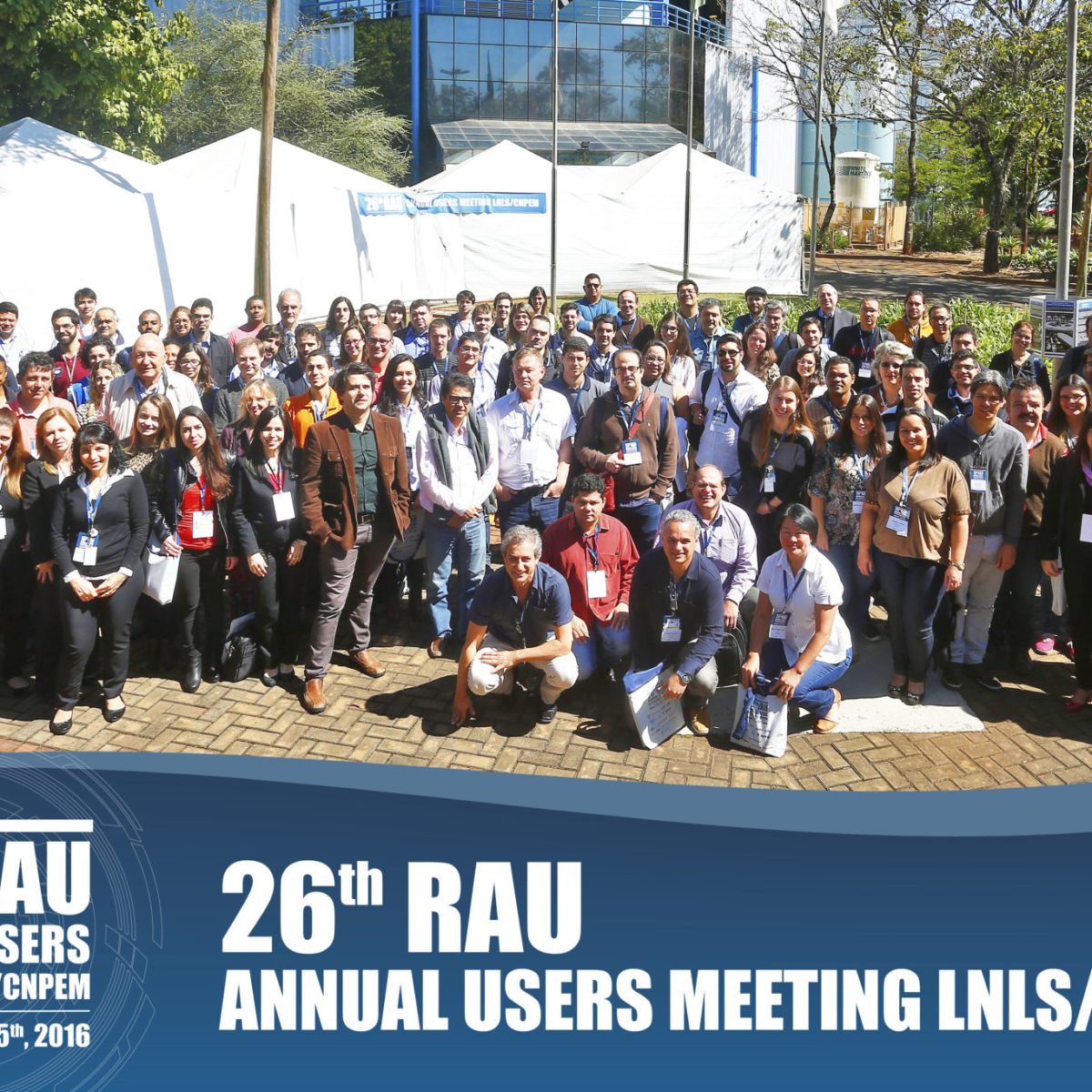
The meeting was attended by 134 delegates, in August 24th and 25th, 2016 at the CNPEM Campus.
The 26th RAU (LNLS’ Annual Users Meeting) was held in August 24th and 25th, 2016 at the CNPEM Campus in Campinas, Brazil. The meeting was attended by 134 delegates in total, among which, 26 originated from foreign institutions and/or companies, representing 8 different countries (Argentina, Chile, Uruguay, Italy, Sweden, Switzerland, United States), and 108 delegates were from Brazil.
Among the Brazilians delegates, 55 members of the CNPEM campus attended the meeting, while many others could follow the event through the online transmission of the talks. A total of 76 communications – 51 posters and 22 orals – were presented, with 3 being plenary lectures. In addition, 7 companies were exposing their products.
The first plenary was an overview of the facilities by the Director of LNLS, Prof. Antônio José Roque da Silva, which gave the participants a chance to learn first hand the plans for the future. In particular, the ongoing construction of one of the brightest synchrotron radiation sources in the world, Sirius, set a perfect background for the discussions in the meeting, which also included transition plans from the UVX, the existing storage ring, to the new Sirius machine.
Following the first talk, Dr. Jan-Erik Rubensson gave an introductory talk about inelastic x-ray scattering in the soft x-ray domain. The program of the first day was complemented with two parallel Oral Communication sessions, whose speakers were chosen among the submitted user contributions, and one Poster session.
The third plenary opened the second day, with Dr. Meitian Wang giving a very comprehensive picture of the field of Synchrotron Serial Crystallography. In the following session, the LNLS Thematic Session proposed a more technical discussion about the UVX and SIRIUS beamlines. Harry Westfahl, the Scientific Director of LNLS, discussed the beam characteristics of both machines, and exposed the technical solution for a transition from the UVX to the Sirius storage ring. This talk was followed by presentations of the characteristics of the new beamlines based on undulator insertion devices.
To close the meeting, a panel discussion organized by the Committee as a round-table opened the possibility for the user community to manifest their wishes and give their opinions about the LNLS status and plans for the future.
Many issues concerning directly the users, like user portal improvements, renewed website, availability of techniques and instrumentation, user training in advanced techniques, sharing responsibilities among external institutions and internal training programs, have been treated during the session. Nevertheless, the main point of discussion was the transition plans from the UVX to the Sirius light source. It became clear that a solution keeping the two machines running with an overlap period would be hardly feasible.
The solution most agreed among the audience contemplated commissioning of the Sirius storage ring by the installation of the new beamlines and moving a few beamlines working nowadays on the UVX storage ring. These beamlines would not be optimized to Sirius but would nevertheless provide a much better performance than in the UVX.
The plans and the technical requirements were presented in the Scientific Director’s talk and discussed during the session. Moving these beamlines to Sirius requires the use of many pieces of instrumentation in use in the UVX but having these beamlines available for users would require a short commissioning period at Sirius. The plan foresees a six-month period for the transition. Such six-month “dark” period is seen as very acceptable by the users present in the audience. According to the Sirius installation schedule, this “dark” period would probably be by the end of 2018 through the first semester of 2019. A more detailed plan should be presented during 2017.
At the conclusion of the meeting, the participants had the opportunity to visit the construction site of the Sirius building. They were very excited by the advances in the works, which is now about 30% concluded.
The 26th RAU attracted many users and researchers, as well as leading scientists. The meeting has met its goal of encouraging debates, exchanging experiences and integrating the LNLS user’s community.
Article described the activities developed during the course, which happened at LNLS in July 2015
FAPESP and FINEP are selecting proposals of companies interested in developing components for the new light source